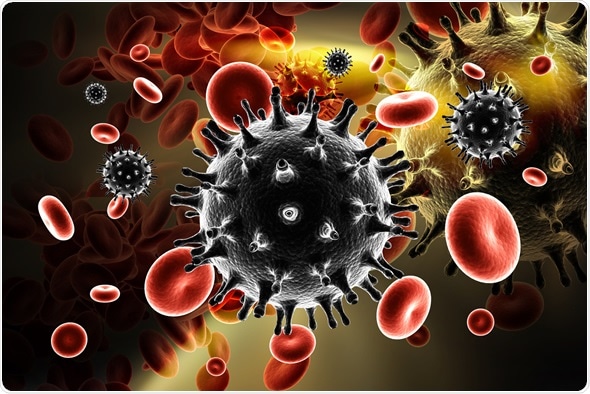For The Latest Medical News, Health News, Research News, COVID-19 News, Pharma News, Glaucoma News, Diabetes News, Herb News, Phytochemical News, Thailand Cannabis News, Cancer News, Doctor News, Thailand Hospital News, Oral Cancer News, Thailand Doctors
The human immunodeficiency virus is classified into two main types: HIV-1 and HIV-2. HIV-1 was discovered first and is more prevalent worldwide, while HIV-2 is less pathogenic and is mostly confined to West Africa. So when we generally say HIV, we are referring to HIV-1. The fundamental differences between HIV-1 and HIV-2 infections lie in the mechanism of retroviral pathogenesis, which is not fully clear yet.
According to the Centers for Disease Control and Prevention (CDC), 166 HIV cases in the US identified between 1988 and 2010 met the center’s definition of HIV-2 infection. The majority of cases were reported in the Northeast and either originated from or were linked to West Africa.

Early tests devised to detect one of these viruses will not detect the other due to the differences in the genetic makeup of these viruses. Over 55% of the genetic material is different in these viruses. Reports also suggest that the cross reactivity between antibodies of HIV-1 and HIV-2 may lead to misdiagnosis and under-reporting of HIV-2 infections. Immunoassays that can differentiate between both types are available nowadays and can help identify the specific type of HIV infection.
HIV-1 and HIV-2 have many similarities including their intracellular replication pathways, transmission modes and clinical effects leading to acquired immune deficiency syndrome (AIDS). However, HIV-2 is less likely to progress into AIDS because of its lower transmissibility. Thus, individuals infected by HIV-2 mostly remain non-progressors for a long period of time, while patients infected by HIV-1 progress faster and contract AIDS.
However, once they progress, the pathological process for both viruses is largely similar, though HIV-2 is found to progress at higher CD4 counts. HIV-2 infections are characterized by lower viral loads of over 10,000 copies/mL compared to millions of copies/mL of HIV-1. However, the body’s immune response is more protective in the case of HIV-2 infection thus slowing down disease progression. If this immune response can be replicated, it can be used to delay disease progression in HIV-1 infected patients, increase survival rates and reduce dependence on antiretroviral therapy.
HIV-1 and HIV-2 are further divided into groups and subtypes. HIV-1 is divided into main or M group, outlier or O group and non-M / O or N group, the most common of them being group M, which is mostly responsible for the HIV epidemic worldwide. The other 3 groups are relatively uncommon and are seen in select geographies including Gabon, Cameroon and Equatorial Guinea.
Group M is further divided into genetically distinct subtypes: A, B, C, D, F, G, H, J and K. Some of these subtypes combine to form a hybrid virus called ‘circulating recombinant form’. Subtype B is the dominant HIV-1 subtype found in the Americas, Australasia, and Western Europe and hence most of the clinical research on HIV is focused on these populations.
Globally, subtype B accounts for just 12% of HIV infections. Although subtype C represents almost 50% of all HIV affected individuals, lesser research has focused on this subtype. Subtype C is commonly found in countries in Southern Africa, where the incidence of HIV is very high. Cameroon and the Democratic Republic of Congo, the region of origin of HIV-1, have great diversity of HIV-1 subtypes. However, the pattern of subtype distribution across the globe is changing now, due to population mixing and migration.
The two main subtypes of HIV-2 that are considered epidemic are A and B, though in total there are about 8 HIV-2 subtypes identified so far. HIV-2 group A infections are mostly seen in West Africa, though a few cases have been reported in Brazil, Europe, US and India. HIV-2 group B infections are seen only in West Africa.